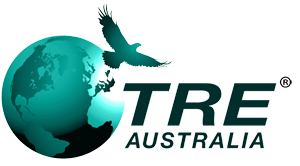
Talk therapy has long been associated with the concept of “story completion,” where recounting traumatic events repeatedly aims to reduce their emotional and physiological impacts. However, this approach, while beneficial, can be limiting. A recent conversation with a friend highlighted a transformative alternative: viewing each retelling of a traumatic story not as a journey to completion, but as an opportunity for continuous evolution and growth.
The Limitations of Story Completion
Story completion suggests that healing occurs when a traumatic narrative can be told without triggering overwhelming emotional or physiological responses. This method aligns with the traditional Western therapeutic model that focuses upon eradicating the negative impact of trauma and restoring the individual to their pre-trauma state. This model however inadvertently confines healing within a fixed endpoint, overlooking the potential for the story & its telling to initiate ongoing personal growth, resilience building & wellbeing.
Embracing Story Initiation
Rather than seeking to ‘complete’ the story, therapists and counsellors can guide clients to view each retelling as a chance to develop new insights and integrate fresh perspectives. For example, my friend began to reshape her traumatic experience into a narrative that incorporated the positive aftermath and her newfound appreciation for life’s fragility and precious moments. This approach fosters a dynamic and evolving relationship with the traumatic event, allowing for continuous personal development & emotional resilience that often helps to increase meaning making & purpose in our lives.
Post-Traumatic Growth & Cultural Perspectives
Many traditional cultures view traumatic experiences as opportunities for significant personal and spiritual growth. For instance, certain cultures believe that children who undergo traumatic events are specially connected to spiritual realms and are destined for roles as healers or shamans. This perspective sees trauma as a catalyst for uncovering hidden strengths and potential, a concept often overlooked in Western pathology-focused models.
From Pathology to Strength-Based Healing
The strength-based approach encourages clients to recognize and harness their innate capacity for resilience and growth. This perspective shifts the therapeutic goal from telling the story in the hope of merely reducing symptoms to the sharing of the story as a way of initiating a deeper integration of not just this particular traumatic experience but all experiences of trauma into the client’s life narrative. By doing so, clients can transform their experiences of trauma into sources of strength, gaining new insights, developing wisdom, and connection to a more profound sense of purpose and connection.
Practical Steps for Therapists
- Invite Storytelling: Invite clients to share their stories multiple times, each time focusing on new elements or emerging insights rather than merely recounting the event.
- Focus on Present and Future Integration: Help clients reflect on how their traumatic experiences influence their current lives and how they can shape their future, emphasizing the evolution of their narrative.
- Incorporate Cultural and Spiritual Perspectives: Recognize and integrate different cultural understandings of trauma, which can provide clients with a richer context for their experiences and potential paths for growth.
- Embrace the Body’s Role in Healing: Acknowledge the physiological responses to trauma and guide clients in practices that promote bodily integration and resilience, such as mindfulness, TRE, somatic experiencing, or expressive therapies.
- Foster Community and Shared Healing: Encourage the sharing of stories within supportive communities, recognizing the collective benefits of shared narratives and mutual support in the healing process not just for the teller of the story but the listeners as well.
Conclusion
Moving beyond the limited idea of story ‘completion’ to embrace the potential for the sharing of our story to help initiate us into newer, deeper & move evolved ways of being offers a more holistic and empowering approach to trauma therapy. This paradigm shift enables clients to continually grow and integrate through their traumatic experiences, fostering resilience and personal transformation. By adopting this perspective in their own lived experience, therapists and counsellors may be better placed to support their clients in harnessing the full potential of their healing journey by creating a space for continuous growth, connection, and empowerment via story telling – shifting the story about telling our story from being only focused on recovery to one that also integrates initiation.
